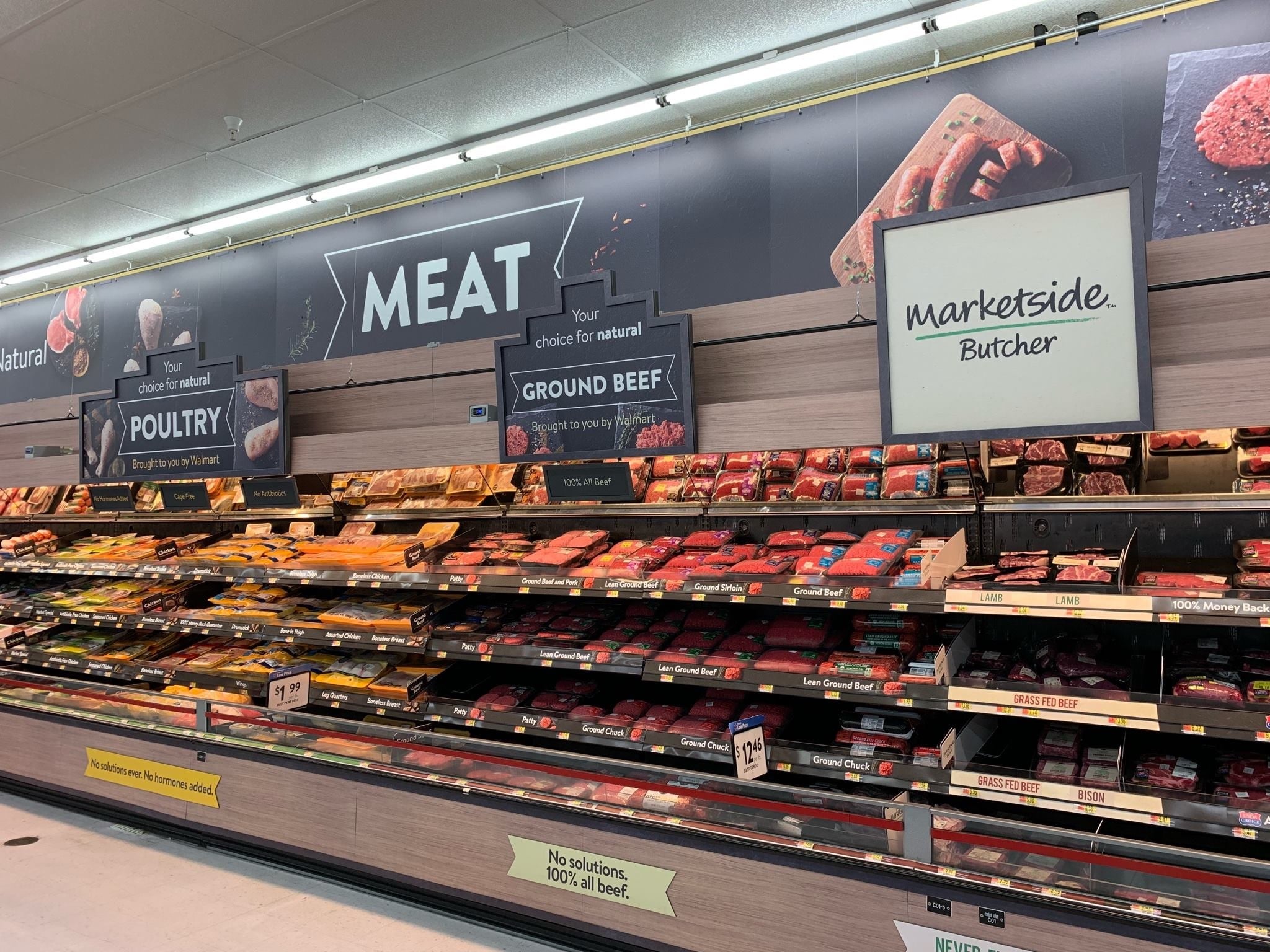When comparison shopping, savings experts advise that you always check unit prices to make sure you’re getting the best deal. But what if the unit prices are wrong? No matter, Walmart says – math is hard, so don’t trouble yourself with multiplication and just pay whatever the price tag says.
That’s Walmart’s argument in a new motion to dismiss a proposed class action lawsuit, which accuses the retail giant of “deceivingly, misleadingly and unjustly” overcharging customers by mispresenting unit prices on weighted goods like meat and produce.
More than two years after a similar lawsuit resulted in a multimillion-dollar settlement, Florida resident Vassilios Kukorinis filed a second lawsuit last October, accusing Walmart of routinely mislabeling products with a deceptively low price-per-pound, but a higher, incorrectly calculated, selling price.
In arguing to have the case dismissed, Walmart suggests unit prices don’t really matter, since most shoppers don’t pay attention to them anyway. Calculating a product’s price involves multiplying the unit price by a product’s weight, and sometimes first converting ounces to pounds. It’s unlikely, Walmart’s motion to dismiss reads, that “a consumer might perform this multi-step calculation and expect to pay the amount produced by that formula.” There’s no reason that “a reasonable consumer would ignore the ‘total price’ featured on shelf tags and product labels, and instead rely exclusively on weight details, perform math — including a conversion of price-per-pound to price-per-ounce — and blindly expect to pay that amount even though the total price shows that the customer will be charged a different amount.”
But if a product is advertised as costing $2 per pound, shouldn’t you expect to be charged $2 per pound? If you’re charged $3 per pound, should you just chalk it up as an oopsie on Walmart’s part? Walmart thinks so. “Far from showing fraud, these allegations, even if true, simply reflect minor discrepancies that are not misleading to reasonable consumers,” it argues.
Kukorinis’s lawsuit suggests the pricing discrepancies aren’t just innocent mistakes. He cited dozens of examples of incorrect unit prices at his local Walmart, and said Walmart’s receipts bear out the alleged deception – inflating the product weight so the unit price-per-pound appears to add up. So, in the above example, if you buy a one-pound item advertised as costing $2 per pound, but the selling price is actually $3, Kukorinis says Walmart’s registers will inaccurately ring up the product as being 1.5 pounds in order to rationalize the higher selling price.
Walmart goes on to claim that Kukorinis himself is at fault for paying higher prices that he says he knew were wrong. He “was aware of the alleged price discrepancies, and he kept buying the products. Thus, any purported damages result from Plaintiff’s voluntary actions, not the alleged deceptive practices by Walmart,” the retailer argues. “Rather than ask for a refund, Plaintiff kept shopping at Walmart stores, took photographs of other allegedly ‘mispriced’ products, and then filed this class action alleging mispricing.”
So it would appear the burden is on customers to catch pricing discrepancies, which would be difficult to do if the notion of customers doing math while shopping is so implausible.
The judge in the original mispricing lawsuit rejected Walmart’s similar argument in that case. “Contrary to Walmart’s assertion,” he ruled, “the fact that Plaintiff continued to purchase weighted goods does not negate his injury but may in fact highlight the pervasive effect of the alleged misconduct.”
Walmart’s final argument is that the settlement in that case precluded Kukorinis from relitigating the same claims in his new case. But Kukorinis’s original lawsuit only pertained to clearance-priced products, while the new lawsuit argues the pricing discrepancies are actually much more pervasive. And the fact that the registers try to justify the funny math by doing some funny math of their own, Kukorinis’s lawsuit claims, suggests that it’s not just human error but something more sinister.
As part of the original settlement, Walmart set aside up to $9.5 million to reimburse shoppers who filed claims for purchasing inaccurately-priced clearanced meat products. But Walmart didn’t admit any wrongdoing – and it’s not about to admit any wrongdoing now.
Despite all the talk about unit prices, “the total price charged at the cash register matched the total price stated on the labels affixed to the product” – and that’s all that matters, Walmart argues. It will now be up to a judge to decide whether multiplication is too hard for shoppers – or whether Walmart is the one that needs to go back to math class.
Image source: Walmart















My husband and I spend a lot of money at Walmart and have even got into disagreements with employees about prices.it is just sickening how the rich always make their money on the backs of those not as well off.I wish we could go back to pioneer time not cars,no phones, peace and quiet! We can’t go back but at least try to be more honest but I doubt it.